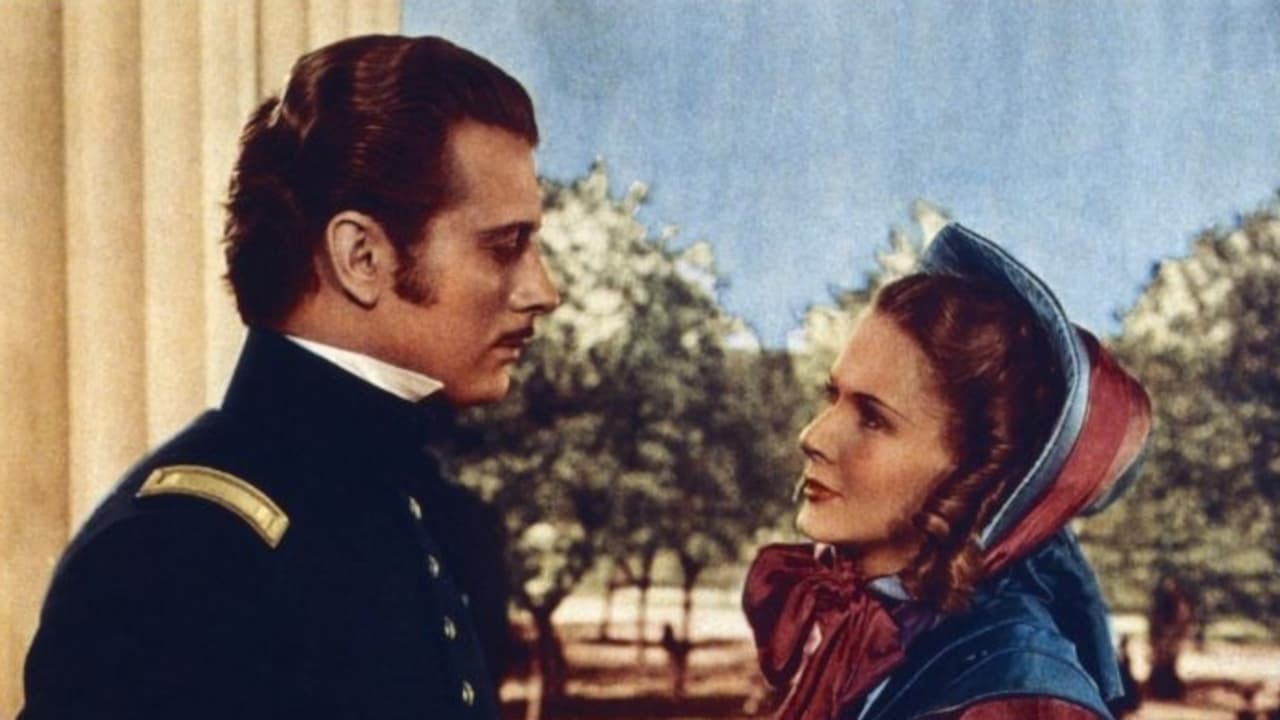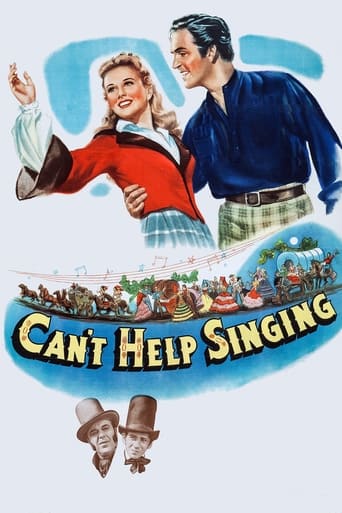



What a waste of my time!!!
Don't listen to the Hype. It's awful
It's simply great fun, a winsome film and an occasionally over-the-top luxury fantasy that never flags.
View MoreA clunky actioner with a handful of cool moments.
I wonder how many movies I have in my collection on this same theme. It has to be more than a dozen, all languages included, with minor changes here and there. With a mésalliance on the horizon, the girl escapes the iron-grip of her progenitor and goes off in a wild run (the field differs. Here it is wild-wild west, in "It happened One Night" it was just country-side, Roman Holiday it is town, and so on. On the way she meets some-one who was never in her scheme of things (nor her fathers obviously) and finds that this was the true love, the other one was just the rebellion, and naturally in the end, probably in all the cases, all has to lead to logical conclusion (except in Roman Holiday of course). Of all the versions (naturally Bollywood or other Indian versions excluded), I think only this one is musical. Naturally (as one would expect), almost none of the movies give credit to where it is due. In fact most likely even the very first one has been plagiarized ? I am not too sure, but there has to be one of the fairy tales of this model, by Grimms or Andersson, or some other. If it is, at the moment, it is missing the neuron connection in my brain. When I talk of the very first one, it is not 'It happened One Night (1934), who does give credit to Samuel Hopkins Adams - though not mentioned, for his short story Night Bus (1933), This one too credits "Girl Of the Overland Trail" of Warshawsky (Brothers?), Roman Holiday doesn't credit any external person. The first one, in my list, is Jessie Matthew's - There Goes The Bride - which is of 1932, that is one year senior to even the short story 'Night Bus' . The only difference is that here Jessie runs away to escape the mésalliance and not to jump into it (which the father tries to impose onto her). After this, whether the story, or the movies were all 'Influenced' by this. The movie story is known in first five minutes. The moment a rich girl, the main protagonist, wants to marry a handsome in look but not in character man, and it is hinted, or clearly said, that it is only since the father hates, she wants to do it, we know where it is going to lead. However with the interest gone, it still is watchable, mainly due to Deanna, though she looks too sweet to be of rebellious kind (Colbert had a tougher look, Audrey had a whimsical one), but still the movie didn't become too dull., and that was despite big holes in the plot, in fact some of these could have been well avoided, for example the Marshall failing to recognize., with her photograph published everywhere ? Even the India scene was a bit too derogatory, but at least that was better than other westerns, where they are shown as blood-thirsty killing machines... or was this depiction worse? Well I can give 2 stars to Deanna, and about 4 to 4.5 for the execution, and it goes to just above average, but watchable, that is not boring.
View MoreCopyright 11 December 1944 by Universal Pictures Co., Inc. New York opening at Loew's Criterion: 25 December 1944. U.S. release: 29 December 1944. U.K. release: 2 April 1945. Australian release: 12 April 1945. 9 reels. 8,155 feet. 90 minutes. NOTES: Number 3 at Australian ticket windows for 1945. Although the movie certainly took good money, this level of success was not duplicated elsewhere in the world. Kern and Salter were nominated for a prestigious Hollywood award for Best Scoring of a Musical Picture, losing to Anchors Aweigh. "More and More" was nominated for Best Song, losing to "It Might As Well Be Spring" from Rodgers and Hammerstein's State Fair. COMMENT: One can't help liking Deanna's first in color. Admittedly, as was the fashion at the time, she is overly made up with far too accentuated lips, but with the added attraction of period costumes, she still looks fresh, pretty and vibrant nonetheless. She's in fine voice too, getting her light soprano pleasingly around three attractive Kern-Harburg melodies.The surrounding story not only offers the opportunity for pretty dresses and comedy, but some mighty fetching outdoor scenery as well. Director Frank Ryan admirably demonstrates that although he co-wrote the script, he is no stickler for the dialogue-is-god school of film-making, but has handled the camera with panache and style. Stunning Technicolor photography and an abundant budget helps too. Supporting players include many of our favorites such as Ray Collins at his wheedling and dyspeptic best, Olin Howland as a wagon-master yet, Andrew Tombes as a confidence shark, Akim Tamiroff as a phoney highness, and Leonid Kinskey in one of the biggest roles of his career as the latter's Laurel-like accomplice. Despite her prominence in the credits, June Vincent has a miniscule part - two brief shots, no more than forty or fifty seconds in total! OTHER VIEWS: Very bland if very prettily photographed Technicolor musical. Ray Collins manages to put his scenes and his comedy across with both expertise and charm - qualities which are somewhat lacking in other members of the cast, most notably hero Robert Paige, but also to a lesser extent (because their roles are smaller), Thomas Gomez and David Bruce. Even Akim Tamiroff and Leonid Kinskey often seem labored and strained, though they do contrive at least two fairly amusing moments, when they try to break open Deanna's trunk in front of Marshal George Cleveland, and when they attempt to flee from the Indians, only to have the natives overtake them and leave them behind! A pity the wearisome storyline and the equally tedious Mr Paige take up so much time. After all, a crowd-pleaser of a musical like this deserves a really simple plot that serves only as an excuse for gorgeous studio and location photography, plus the all-important presentation of attractive song interludes. Here we have a score by Kern and Harburg no less. True, both are slightly below form. The most catchy number, fortunately, is the title tune. The others all seem somewhat derivative, though leading to an agreeable reprise at the fade-out. Miss Durbin who not unexpectedly handles the prima-donna's share of the score, sings as prettily as she is photographed and as charmingly as she's dressed (in attractive period costumes loaded with lace), hair styled and made up. Frank Ryan's direction often rates as most stylish. -- JHR writing as George Addison.
View MoreA very silly production is "Can't Help Singing." This 1944 film did not give the opportunity for Deanna Durbin to showcase her talent. Her voice was good; in fact, too good for this inane film. Her singing was way above the plot where a senator's daughter flees her father to run off with an army officer. This time dad is right. The only reason why the guy is interested in her is to further his career via her political father.Along the way, she meets a card shark and the two hit it off. The ending becomes silly when Durbin is forced to admit the stories she has made up along the way.Durbin sings the title song "Can't Help Singing" with great enthusiasm but the other songs, especially California-y are ridiculous as is the plot.
View MoreFor reasons beyond comprehension, "Can't Help Singing" is a film no one I know has even heard of, much less seen, probably because Deanna Durbin, a child actress of the mid-1930s who blossomed into an alluring,witty, beautiful young woman in the 1940s, suddenly chucked her career in 1948, started a new life in the French countryside with her husband and subsequent children, and has never been heard from since. But, within a little more than a decade, she not only saved Universal studios from bankruptcy but was the most popular female star of her time. Watching her films today, one is amazed at how contemporary they--and she--are, particularly when she graduated from child star ("100 Men and a Girl," "Three Smart Girls") to a spunky young lady with a voice of pure velvet and a melting range of emotions (from rueful to sensual). "Can't Help Singing" is a luscious introduction to the timeless charm of Ms. Durbin. Her first--and only-- film in Technicolor, this lighthearted musical Western must have cost Universal a fortune--filmed mainly on outdoor locations in the Northwest, with one of Jerome Kern's most beautiful (and underappreciated scores). Forget the plot about a politician's daughter who, against her father's orders, heads West to track down her handsome cavalry lover (David Bruce) but, en route via covered wagon to the wild, wild West, finds herself locking horns--and finally arms--with a dashing, sarcastic cowboy (Robert Paige--whose good looks and soaring baritone are more than a match for Ms. Durbin's beauty and exquisite soprano).What counts is the ravishing color photography of Kern's songs--filmed on location in the great outdoors (the highlight, for me, is Ms. Durbin's soaring rendition of "Any Moment Now" filmed as she wanders through the breathtaking backdrop of Bryce Canyon--truly one of the most exquisite musical interludes in movie history). Add "More and More" (Oscar-nominated), "Californiay," and the knockout title song (performed by Ms. Durbin & Mr. Paige in adjoining outdoor bathtubs--don't ask!)and there's little more you could wish for in a movie--musical or otherwise. I've read that the film was a boxoffice disappointment and hastened Ms. Durbin's decision to call it quits a few years later. And most of the reviews I occasionally come across are generally lukewarm, if not hostile. Movie scholars might argue that, from an historical viewpoint, "Can't Help Singing" was an unintentional precursor of all the zesty, musical Westerns that were to enchant movie audiences during the next decade. Perhaps so. Who cares. I can't see how anyone can resist the once-in-a-lifetime glories of Deanna Durbin in her dazzling prime, the most beauteous use of Technicolor imaginable, and the entrancing melodies of probably our finest American composer, Mr. Kern. Thank you all very much.
View More